Duck Dive: Michigan Wolverines Football 2025 Preview
Special thanks to Jake Singer of Maize n Brew for joining me to discuss Michigan’s roster on this week’s podcast:
:no_upscale()/cdn.vox-cdn.com/uploads/chorus_asset/file/26038683/MIchigan_offense.png)
The last time the Wolverines happily managed the transition from one above-average quarterback to another was in 2016, when Jacob Rudock finished the previous season with a 141.5 NCAA passer rating, was drafted in the 6th round by the Lions, and handed the reigns to Wilton Speight, who came in at 139.8 during their 10-3 Orange bowl season (the FBS median at the time was about five points lower than it is today). Those were former head coach Jim Harbaugh’s first two years in Ann Arbor; despite several successful seasons and QBs, Michigan has had trouble with the transition every time since either because the backup wasn’t ready to play or the successor had been misevaluated in one way or another.
During our podcast conversations, the quarterback question has occupied much of the discussion time between Jake and I, because it’s been the central factor in breakthroughs, stumbles, and mysteries:
- Even their best offenses in recent years have not been very effective at doing the things the program seems to pride themselves on, but superior QB play in 2022 and 2023 on 3rd & long with an incredible conversion rate at long-distance passing flipped their fortunes. A heroic QB rescuing the program from its own tendencies was the difference between the stallout seasons that came before and the title run, and prompts a re-evaluation of why Michigan plays football the way that they do.
- The inability to have a viable QB developed or acquired through the portal for the 2024 season creates a host of questions about talent evaluation and resource priorities.
- The trajectory of the original starting QB in 2024 — a former walk-on who was pulled after several interceptions, replaced by a runner who couldn’t pass and then a veteran on the verge of medical retirement, only to go back in and play fairly well at the end of the season — suggests that the staff lost their nerve and mismanaged the position in-season as well.
- Assessing the roster talent for returning pass-catchers in 2025 is very difficult from a statistical standpoint because virtually everything was being funneled to the sole tight end who had magic hands to catch inaccurate balls, and everyone else’s abysmal per-target numbers are probably unfair reflections of what they’d do with even a replacement-value QB throwing the ball.
- Mostly due to the 2024 QB management circumstances (and one unfortunate injury in the bowl game), no one competing for the 2025 starting job has thrown a pass for Michigan before, making handicapping the race some real guesswork.
The quarterback who started and finished the season, #16 QB Warren, performed at a full standard deviation better in passer rating in his second stint compared to his first. It was an impressive and unusual growth trajectory, but sadly any chance of seeing where he might be heading in 2025 was cut short late in the bowl game when he took an injury that’s turned out to be an ACL tear. Jake told me he’s unlikely to suit up during the regular season and would be an outside prospect for a postseason backup this year at the earliest.
Jack Tuttle, the grad transfer who’d been bouncing around since 2018 and briefly looked like the best passer on the team before it was clear that the UCL injury would keep him from effective play, has medically retired. Alex Orji and Jayden Denegal have transferred out – in our first conversation last Summer, Jake correctly identified them as non-viable passers but at least Orji could run so he got most of the backup reps and replaced Warren when the staff blinked, while Denegal didn’t have that ability and so never saw the field. The only returner to the team who’s healthy is #2 QB J. Davis, a mid 4-star from the 2024 cycle who redshirted last year.
The three newcomers to the team are low 3-star prep recruit Chase Herbstreit, son of the former Ohio State QB and ESPN commentator, grad transfer #10 QB Keene from Fresno State and UCF before that, and 5-star prep recruit #19 QB Underwood. Herbstreit is a Fall arrival and likely won’t figure into the 2025 race. Keene is a longtime veteran, he took over as a true freshman in 2021 at UCF after Dillon Gabriel was injured in week 3 and posted some pretty decent numbers in the circumstances, then the next year coach Gus Malzahn brought in John Rhys Plumlee to be the starter who did no better; Keene took over in the final four games and posted a passer rating 25 points higher in the same offense then bounced for Fresno where he’s been an above-median starter for the past two seasons. Jake told me Keene was held out of Spring practices with a shoulder injury but will probably be good to go for the Fall.
Therefore the only two QBs available for the Spring game were Davis and Underwood, neither of whom had thrown a pass in college before. Both looked exactly like what it says on the the tin – inexperienced young passers with obvious raw arm talent but frequent freshman mistakes throwing into the wrong spot given the coverage or just dirting the ball on command issues (the whole thing was a dull, dreadfully low scoring affair that I can’t believe I was made to wait a week on tape-delay for).
Assuming he’s healthy, Jake and I agreed that Keene is a better choice than the freshmen, and that one would think Coach Moore would have taken to heart last year’s lesson that an experienced and accomplished QB is worth far more than an entire room full of talented maybes. There are a couple of other interesting questions floating around here – one is the only coaching change, new OC Lindsey who’s been doing this for a long time now and as Jake and I discussed may be a signal that Moore is removing himself from micromanaging the offense or pushing a particular brand identity. The second is “opening the bag”, as it were, and Michigan finally venturing into waters that other programs had been charting for several years now … Jake wondered if that militated for starting the very pricey Underwood because the program felt it had to and didn’t have experience navigating this kind of situation gracefully. I think that’d be a bad look for a university with a $19 billion endowment.
Offensive rushing efficiency was the one stat of the twelve fundamentals that I track from charting to rise in 2024 compared to Michigan’s national title season in 2023, largely because they swapped out starting backs – Kalel Mullings instead of Donovan Edwards. Both have graduated and are off to the NFL, Mullings was drafted in the 6th round by the Titans and Edwards signed a UDFA with the Jets. Some backups and developmental guys who got little to no carries prior to garbage time transferred out as well: Cole Cabana, Tavierre Dunlap, and Benjamin Hall.
There are two returners into the room from the 2024 cycle, high 3-star #25 RB Ka’apana and high 4-star #23 RB J. Marshall. The former didn’t get any meaningful play and preserved his redshirt; Jake said he’s unlikely to see the field much in 2025. Marshall was getting mostly garbage time reps last year but in the bowl against Alabama both of the starters were sitting out so he split the carries with Hall, and it was clear by the end of the game that Marshall was the better performer and was given the gamewinning series of carries after Warren went down.
There are three transfers and two prep recruits into the room, though the freshmen are unlikely to contribute due to an injury to the one of the two who was an early enrollee. The transfers are #22 RB Haynes from Alabama, a high 4-star from the 2023 cycle who’s posted very impressive numbers the last two seasons and was the star of the Spring game, and then after the Spring game they got two lower level transfers (Jake thinks in response to the freshman’s injury and so look like designated depth, which reads right to me), CJ Hester from UMass and John Volker from Princeton.
It seems pretty clear that Haynes and Marshall will be the 1A/1B while Hester and Volker will be the backups, though some of the numbers that the latter two put up at their previous schools are pretty good looking and I could see a scenario where the relatively unproven Marshall winds up not working out and one of them takes his place. At any rate this room looks very good with a nice built in backup plan and several extra emergency pieces for depth – more than one guy who’s likely to be on the bench most of the year would be a starter at quite a few FBS schools. Overall this looks like an improvement on the running back room of the last couple of years, strange as that may sound about a team with a recent national title whose identity is running the ball, because those teams really only had a single all-around top quality back the staff was willing to hand the ball to at any given time; the 2025 room not only looks like it has multiple high quality options but no sacred cows.
The tight end unit loses 1st round draft pick Colston Loveland to the Bears. During the first part of the season the distortion in the pass target numbers was so extreme as to be mind-boggling, he had triple the targets of anyone else and still outperformed the rest of the team by 20 points in efficiency and doubled up their cumulative yards per target and explosiveness rates. In the second part of the season, probably as a combination of Warren settling in as a passer and opponents distributing pass defense resources more his way, the discrepancies eased up a bit but still existed in the data.
The final statline on the year for Loveland was getting 30% of all targets which is double the second-leading receiver, with a 53% per-target success rate, 6.4 adjusted yards per target, and 10.7% explosiveness. Those are mediocre to poor numbers in a vacuum, but still massive relative to every other receiving option on the team who cumulatively came in at 35.5% efficiency, 4.6 YPT, and 6.85% explosiveness. If the “Not-Loveland Michigan Passing Game” in 2024 were its own football team it would be the worst offense I have ever recorded.
The second tight end in during 2024 was #17 TE Klein, who returns in 2025. He got a fraction of the meaningful targets as Loveland did, but enough for decent statistical evaluation, coming in at about 50% success rate and 5.1 YPT – in line with the rest of the team’s average and towards the upper range of their efficiency cap. When I’ve pressed Jake for his opinion on Klein’s potential going forward — out from Loveland and predecessor AJ Barner’s shadows and with presumably a more accurate passer — he’s said he thinks Klein will be a step behind those guys in speed and route running but will show good hands and be a viable pass-catching option, putting him as one of two primary TEs in the 2025 rotation.
The other Jake is betting on is #80 TE Hansen, a low 4-star from the 2024 class who burned his redshirt last year, who he thinks shows some real athleticism to be the next great tight end at Michigan. I didn’t get enough eyes on him for much of an opinion — too few targets outside of garbage time for good statistical evaluation, and he was held out of the Spring game for some minor injury — but I think Jake’s conjecture about playing time is right. A true freshman getting that much playing time ahead of the two lower rated but older 2023 recruits, #83 TE Z. Marshall and #43 TE Tonielli, or fellow 2024 but higher rated bluechip #86 TE Prieskorn, none of whom have seen the field (the first two at least played in Spring games, I can’t find any media reports about Prieskorn’s absence from the Spring game or even photographs of him on the sidelines, leading me to grill Jake about whether he’s a fictitious person), is a sure indication that the staff has more confidence in Hansen than the rest of the room.
Longtime veteran #44 TE Bredeson returns for 2025, who’s better understood as a fullback at Michigan. It’ll be interesting to see how the position is used differently in Lindsey’s offense, at previous stops he’s used an I-formation but not much more than that, though it was surprising to see the unrated junior #42 TE Hoffman, who Jake told me is Bredeson’s understudy at fullback, come out of nowhere in the Spring game as the second TE with the blue team offense next to Klein and have by far the most productive receiving day of anyone in the room.
The two leading wide receivers on the team in 2024 were Tyler Morris and #0 WR S. Morgan, both of whom I would characterize as naturally inside receivers under six feet tall but with at least one of them usually lined up to the sideline. Their per-target numbers were terrible last year, and it’s been pretty challenging to fairly sort out how much of that is on the receivers themselves as opposed to the QB situation and the rest of the offense from watching tape and parsing the stats. In a couple of our conversations Jake has praised Morgan’s ability to make tight contested catches in 2023 and argued that the timidity with which the passing game approached him in 2024 was responsible for his decline in production. I know the types of throws he’s referring to and there’s no way to miss the across-the-board decline in performance for all pass catchers — including the three who were getting plenty of passes from McCarthy the year before, Loveland, Morris, and Morgan — so clearly the basement numbers aren’t entirely on these guys. But examining the production compared to baseline during meaningful play both years for control and comparison to others points up that some guys have been more problematic than others:
:no_upscale()/cdn.vox-cdn.com/uploads/chorus_asset/file/26038681/Michigan_targets.png)
Even when McCarthy was throwing the ball, Morris and Morgan were significantly behind everyone else in per-target efficiency, and Morgan was not just underwater but producing four full yards per target fewer than Morris that year. That relationship continued in 2024 – while both slid with the rest of the offense, Morris remained well ahead of Morgan in success rate and YPT, and other receivers (although hardly producing the elite efficiencies of 2023’s top group) were more valuable on a per-target basis. This irrational distribution of targets — far more should have been going to the outside receivers who were more efficient — was the single biggest reason that Michigan’s passing offense was atrocious instead of merely mediocre.
Morris has transferred out but Morgan and every other wideout getting meaningful play returns in 2025. During the Spring game I was seeing returners #3 WR F. Moore — whose per-target numbers at 54.5% success and 8.5 YPT were the best of anyone on the team including Loveland, although at just barely enough targets for evaluation so that should be taken with a grain of salt — and #81 WR O’Leary on the outside, while the third returner who may be in contention for an outside spot because of his size and speed (though Jake is skeptical of his talent), #12 WR Bell, was held out with a minor injury.
Two other returners were 2024 recruits and redshirted last year, high 3-star #14 WR Goodwin and low 4-star #82 WR I. Stewart, both of whom I was seeing in the slot during the Spring game although Goodwin is listed at 6’1”. Jake said he hasn’t heard much about the redshirt freshmen, though I think the slot position is (or at least should be) a lot more unsettled than the outside spots.
There are five additions to the unit, two transfers and three prep recruits. Both of the transfers didn’t play much in 2024 for different reasons, though had very good production in 2023 – #13 WR McCulley from Indiana redshirted after finding he didn’t fit in the new staff’s system, and Anthony Simpson from UMass got hurt and is still recovering so we haven’t seen him in a Michigan uniform yet. The true freshmen are high 3-star #88 WR Browder who was on campus for Spring ball and listed at 6’5” so I thought it was curious we didn’t see him play in the Spring game, low 4-star Jacob Washington who arrives in the Fall, and mid 4-star #4 WR Marsh who played quite a bit on the outside in the Spring game and Jake said the staff is high on.
Jake and I agreed that McCulley is the only one whose position is a certainty – he’s a longstriding 6’5” flanker and a great fit for the previous iterations of Lindsey’s offense, with stellar previous production at Indiana (61% success and 8.3 YPT … Indiana actually produced multiple quality wideouts during that time, it was a terrible run game and constant pocket breakdowns which doomed that offense) who simply wasn’t a good match for the quick-breaking RPO offense the new staff brought in where most of the outlets are on the short, twitchy side while the lone big guy spot was already taken by a preferred JMU transfer, and even he topped out at 6’2”.
The rest of the outside receiver two-deep seems relatively clear as well, although there’ll probably be some Fall camp jostling for pole position on the other side. I should think Moore would be the top candidate, followed by O’Leary, with Bell and the freshman Marsh for depth. That’s five guys for two spots, plus a couple more freshmen over six feet who could be pressed in if it gets real dicey, of whom one was a great portal get, another had pretty intriguing numbers despite a bad offense last year, and two more at least have meaningful experience. That’s a lot better shape than they were in this time last year at the position, when Jake told me that Morris was likely to be a starter on the outside and I nearly choked in surprise.
The inside seems more unsettled to me. Morgan returns but I think he needs a challenge to his job, and change-ups to the way Michigan has been doing things at multiple places along the offense (like taking transfers at skill positions and not just the o-line, opening the bag, and trying to run a scheme cognizable to someone born this century) make me think that Lindsey won’t just automatically go with the upperclassman out of sentimentality. Options include the transfer Simpson if he’s healthy — Jake said the timeline for his recovery hasn’t been disclosed or even what precisely the injury is — or the redshirt freshman Stewart. I think they’ll probably get more production out of the slot than in 2024 assuming they have a more accurate QB since it’s virtually impossible for it to go the other way, but the odds of getting objectively high quality play from the position are murky – it’d require a lightbulb coming on for Morgan, Simpson getting back to 100% after what’s been a very long recovery, or the unknown Stewart coming out of nowhere to light it up, and independently for the staff to correctly recognize which guy to play when there’s a less than encouraging track record from last year on that question.
On last Summer’s podcast, Jake and I spent quite a while plotting out what the 2024 offensive line configuration would be, since after 2023 Michigan’s entire starting group — or at least, the lineup they settled into after messing around with some ill-advised moves to start the year which resulted in several eyebrow-raising interceptions and negative plays against overmatched opponents — headed off to the NFL. We wound up projecting exactly what it would be at both starters and backups, despite a few reservations in some spots as the line had a couple guys seemingly out of position as they’ve been predictably but weirdly relying on transfers instead of internal development lately. The anticipated issues came to pass, as well as some puzzling in-season moves.
Jake has been writing quite a few articles about line mismanagement this past year which I agree with. I’ll add that I think the core issue reaches back to stunning failures in recruitment during the 2022 and 2023 cycles, in which they only took five total offensive line preps:
- Alessandro Lorenzetti, mid 3-star OT, converted to DT, never played, transferred out
- Amir Herring, low 4-star OT, didn’t play, transferred out
- Evan Link, low 4-star OT, starter in 2024, lowest graded OL, in a battle with an FCS transfer
- Connor Jones, mid 3-star OT, converted to OG, hasn’t played yet in three years
- Nathan Efobi, low 4-star OG, hasn’t played, candidate for starter
Of these, I’ve only seen Link and he was borderline unplayable last year. His backup, Andrew Gentry, graded out much better, but as soon as Link was healthy again Gentry went back to the bench. Gentry evidently wasn’t wild about this treatment and has transferred to BYU. Jake has gotten word that Efobi is developing well and he’s putting down a marker for him to win the RG job in 2025; I suspect that Jones may be coming along pretty well too since I saw him quite a bit in the Spring game and on par with Efobi’s time on the other team, but as we discussed on the podcast that would mean the only two viable recruits from this two-year window who are older than redshirt freshmen are in direct competition for the same job.
The right guard spot should be open because #58 OG El-Hadi looks to be moving over from RG to LG, which is more appropriate for him. He graded out reasonably well for a first-year starter last year, and probably should have had that spot instead of the Northwestern transfer Josh Priebe who graded out just as poorly as he did with the Wildcats, and who now has graduated.
At center, for three years running the staff has been talking up low 4-star #51 C Crippen and then had someone else start instead of him – one transfer, then another, then a fellow senior but a low 3-star Dominick Giudice last year. Giudice got hurt midseason (accidentally, one trusts) so Crippen finally got to start. Over the course of the entire year I don’t have substantially different grades for either on my tally sheet so I don’t really get the point of tormenting the guy this long. Giudice transferred to Mizzou while Crippen returns. He should have the job secured at last, although Jake talked up a high 3-star prep recruit #75 C Strayhorn I saw playing with the second unit in the Spring game (apparently the staff thinks the scouting services misevaluated Strayhorn and he should be a 5-star center) and contended that if any true freshman could get early playing time it’d be him … I think that might push Crippen over the edge into madness.
Jake argued that the right tackle spot is locked down by 2024 mid 4-star #54 OT Sprague. I only really got to see him during the bowl game, when left tackle Myles Hinton sat out for draft prep (the Eagles took him in the 6th, another demonstration that the NFL is looking at linemen’s frames, not their tape) and Gentry had hit the portal, so Link went to the left side and Sprague took the right. I think Jake is probably right that the job is Sprague’s if for no other reason than that was the solution the staff has already preferred. Scanning the roster every other viable option at tackle has bounced, been converted to a different position, is too green, or the staff forgot to recruit, which is why the left side is likely a battle between Link and FCS transfer #70 OT Norton (whom I’ve actually charted in a few games at Cal Poly where he started at LT as a redshirt freshman last year and graded pretty well, significantly better than Link as it happens, though he comes in pretty undersized at 275 lbs and faces an uphill battle to unseat him). Jake pointed out that Sprague looked great in the bowl and Link seemed more comfortable on the left side too, though I thought that last bit should have been a hint not to take bowl performances against has-been teams from leagues going through a down season at face value.
As with a couple of other Big Ten lines I’ve been tracking, I think underperformance in 2024 has much more to do with management than underlying development, which I think has been very strong … in fact the irony is that I think the staff would be best advised getting out of its own way and just playing the guys they got at the spots they got them for. I have my doubts that the 2025 line will be another Joe Moore winner since the most important two spots have their shakiest options, but getting well recruited and developed homegrown guys in their appropriate spots at both guards and right tackle is a relief, and strong 2024 and 2025 recruiting classes with minimal portal takes signal a back-to-basics approach which this program can’t return to soon enough.
:no_upscale()/cdn.vox-cdn.com/uploads/chorus_asset/file/26038680/MIchigan_defense.png)
This was the first year for DC Martindale running the defense. It was structurally very similar to the previous systems used by the Ravens braintrust of Mike Macdonald and Jesse Minter, operating out of the 4-2-5 against 11-personnel or lighter packages and pulling a DB to insert a third DT and go to an odd surface against 12-pers or heavier. The key difference, which Jake and I had flagged during last year’s Spring game, was that unlike previous iterations which stayed in the nickel configuration on a large percentage of opponents’ 12-pers packages and only switched to the 5-2 when they figured they really needed it to stop the run, Martindale in 2024 just automatically subbed the instant the offense did.
It was interesting to see which offenses used 12-pers spread passing attacks to manipulate this. Texas, Washington, and Oregon definitely did, to explosive results. Michigan State was successful at it between the 20s but committed a series of idiotic mistakes in the redzone. Indiana didn’t because they don’t really have a 12-pers package and their RPO offense kind of operates on autopilot; that was a unique game for a number of reasons. Alabama … I don’t know what to make of the Tide’s offense this past season.
Every other team Michigan faced, including Ohio State, had the ability to use this strategy but just … didn’t, largely because I think offensive coordinators in this league are playing with a few cards short of a deck. The result was that most advanced statistical systems like F+ didn’t hammer the Wolverines much for this in the rankings – giving up a lot to by definition smarter and better offenses is ostensibly no dishonor. My model had Michigan taking only minor and expected steps back in the rush defense categories in line with this thinking, but pretty significant reductions in pass defense effectiveness that can be directly traced to exactly this differential against 12-pers passing. These knocked Michigan down to merely an above-average pass defense on an efficiency basis and just an average one on an explosive pass prevention basis; overall my model would have ranked them about 25th defensively, not 7th as F+ does.
The great advantage Michigan had defensively was developing two 1st round draft picks at defensive tackle from the 2022 class, Mason Graham and Kenneth Grant, so they got multiple years of fantastic starting play out of them before they were picked by the Browns and Dolphins respectively. The third starting-level tackle in 2024 was #26 DT Benny, who’s been in line for frequent reps due to the 5-2 substitution system and the rally groups in 2023 Jake and I discussed, though he was injured and missed a few games last year, and rotations were cut down a bit as they really maximized Graham and Grant’s time on the field.
Still, I have a considerable amount of meaningful play for three backups last year and pretty solid grades as well: #92 DT Iwunnah from the 2021 cycle, plus #17 DT Etta and #95 DT Pierce from 2023. Three 2024 recruits redshirted and return: mid 3-star #76 DT Beigel and low 4-star #85 DT Hammond who have a longer body types similar to Benny and Etta, and mid 3-star #54 DT Palepale who’s the stouter type like Iwunnah, Pierce, and the departing starters. Two prep recruits who are pretty highly rated enrolled early and I think will be defensive tackles, #99 DT Kanka and #57 DT Moten (a couple of guys recently have surprisingly switched from tackle to end and vice versa after some time so we’ll have to see how they go but this is where they were in the Spring game).
This looks like a very orderly and well balanced developmental pipeline — four older guys with meaningful experience from last year, a group of second-years ripe for more time in the 5-2, and freshmen for depth — exactly the kind of well managed system I expected to see develop multiple 1st round picks from a mature staff. That’s why I was shocked to see Michigan take two transfers in what Jake called “the Dallas Cowboys model” – #44 DT Payne from Alabama and #0 DT T. Williams from Clemson, who were nearly 5-stars half a decade ago but have rarely seen the field since they were recruited and produced a combined 65 tackles in nine seasons, almost entirely in garbage time.
Considering how much play they got in the Spring game, Payne and Williams will probably figure prominently in the rotation in 2025, and there’s always a chance that they show out in their final seasons of eligibility. Given how much of the 5-2 that Michigan plays under Martindale, having more guys ready to go is probably a good thing, though the question is at whose expense that comes and how it affects the pipeline … Benny, Iwunnah, Payne, and Williams will be out of eligibility at the end of this year, so in 2026 they’ll need Pierce, Etta, and the five 2024/5 guys to be the new unit. But it’s nearly inevitable that one or more will transfer out for lack of playing time, and whoever remains will have had less development because Payne and Williams took it away. If they solve that problem by hitting the portal again, then that becomes a self-perpetuating cycle.
Michigan managed to keep most of their production from the edges in place through continuity from 2023 to 2024, and looks like they’ve done it again in 2025 with just one loss from the four-man rotational group. That’s Josaiah Stewart, who was drafted in the 3rd round by the Rams. He contributed the most havoc stats, but the three others in the group were also fairly productive on that metric as well and they all graded out well. The returners are #91 DE Brandt, #4 DE Guy (who wore #42 last year), and #8 DE D. Moore. I would characterize Moore as one of the two primary rotational guys along with Stewart in the 2023 group with Guy as a depth piece at end and Brandt as a depth piece at tackle, so it was interesting that Guy really stepped up his production to starter-level in 2024 while Brandt slimmed down and joined the second-string at end. All three look to continue in those roles in 2025.
I was about to start asking Jake about the trio of borderline to mid 4-stars Michigan took in 2024 (and the intriguing fact that the lowest rated of them, #33 DE Nichols, got the garbage time play while the highest rated redshirted), why it was that all three older returners who weren’t in the 2024 main rotation had transferred out including Kechaun Bennett just after playing in the Spring game, and whether the two highly rated Fall-arriving prep recruits might get their feet wet in 2025. But then he stunned me with some news I wasn’t ready for, although it wound up answering all my questions anyway: former starting linebacker #1 DE Barham has moved into this room and is going to be a part of the main rotation, trying to capture some Micah Parsons / Abdul Carter kind of magic directly rushing the passer.
It’s entirely possible this is effective, I’ve always liked Barham’s athleticism and instincts since he was at Maryland and he’s got an appropriate enough body type for it. As far as the effects on the rest of the room, we’ll have to see – apparently this was announced early in the offseason but I’m pretty sure I saw Barham playing off-ball in the Spring game. If this is just chatter about an expanded role for a certain package where he pressures off of the edge, then that means they’d need a fourth “real” end for standard downs (I’d guess Nichols) and not much about the picture has really changed.
But if Barham is going to fulltime it at the edge in his final season of eligibility, it changes the equation considerably – all four guys will likely be gone after 2025 (Barham, Guy, and Moore will be out of eligibility, while Brandt will have one year left but will be draft eligible), meanwhile they’ll have crowded out pretty much all meaningful playing time for the five 2024/5 guys who they’d need to form the 2026 lineup. It wouldn’t be doing so with transfers, but the position switch would put them in the exact same place at end as taking Payne and Williams does at tackle.
At linebacker, two guys transferred out without really seeing the field: Jason Hewlett and Micah Pollard. Everybody else returns, although wildly varying levels of ability, experience, and health status means that whether Barham is actually playing in this room or fulltime at edge makes a dramatic difference.
Last year the two starters were Barham and #15 LB Hausmann. Both were new starters in 2024 due to the longtime starters getting drafted at the end of 2023, and both were transfers into the program though at different times. Hausmann came in a year earlier from Nebraska and was a backup in 2023, while Barham was a starter at Maryland and brought in for the 2024 season to continue being a starter. As Jake and I have discussed a couple times, there was a significant difference in the quality of their play last year, stemming from Barham’s superior diagnosis – Hausmann had similar athleticism to make a spectacular play when he read it right, he just more frequently read it wrong than Barham did. That’s why it caught my attention when Jake said Hausmann is going to be the green dot guy in 2025 and in charge of defensive play relaying regardless of Barham’s status – if I were moving players between levels of the defense I’d reverse those two.
The main backup last year was #30 LB Rolder. He had the lowest grades on my tally sheet, with a clear athletic ceiling that made me question how he was rated a bluechip (then again it seems every Big Ten team is required to have a linebacker like this, like a conference mascot). I think the team wanted to give more reps to another backer, #34 LB Hood, but he got hurt and was still unavailable for the Spring game – Jake told me the timeline for him to get back to 100% is uncertain.
There are two young returners and three additions to the room. The 2024 recruits are low 3-star #43 LB Ludwig who redshirted and low 4-star #23 LB Sullivan who apparently burned his shirt playing in every game though I don’t have him on my tally sheet. Two true freshman, mid 4-star #12 LB Owusu-Boateng and mid 3-star #29 LB C. Taylor were playing with the second unit in the Spring game. They’ve added #40 LB Bowles from Georgia, a former mid 4-star from the 2023 cycle but who hasn’t seen the field much in two years and was injured so missed Spring ball – Jake said he wasn’t really sure how or if Bowles fits into the linebacker order.
I think the way Jake teased out this room was pretty logical – he’s got a battle between Sullivan and Rolder for the spot next to Hausmann, and that Sullivan is going to win it because he’s got superior physical upside and the staff has been talking him up more than anyone else (I’d also add that the reason Michigan got Barham is that they’ve been going in the direction of long, lean pass-defending backers rather than neckroll guys, which is a minority take in this conference, and that stance favors Sullivan over Rolder as well). That logic would hold true just the same if we switch it to figuring out the backup in the scenario that Barham isn’t actually leaving the linebacker room and continues as starter, as well.
Ths issue is depth – if Barham’s down a level, Rolder’s getting passed up every year since arriving in 2022, and Ludwig is an afterthought as Jake portrayed him, then the options for a high level backup are down to Bowles and Hood, who are both hurt, or true freshmen, which is pretty dicey. The best shot in that case would be reeling Barham back to the second level, but now we’re back to the same problem as we were with the ends – robbing Peter to pay Paul.
On the podcast we discussed how fortunate Michigan was to have returned so much on the defensive line in 2024 from their 2023 title team, and that fans might have momentarily talked themselves into believing that something similar might take place in the defensive backfield as well. But unlike the front, those hopes wouldn’t really pan out in the secondary amid some unexpected transfers and a rash of injuries – it went from as many as possibly eight of the ten guys in the 2023 rotation returning to effectively only getting two to play the entire year. On top of that, of the four transfers brought in during the 2024 offseason to deal with these losses, one was lost to injury the entire year, another missed some substantial time with injury, and the last two were evidently not really good enough to play at a high level but one of them was forced into playing anyway through a chain of unavailabilities elsewhere.
I’m inclined to chalk some of this up to rotten luck — five injuries to DBs I’ve seen play at a high level is more than is reasonable to ask a staff to plan for — but it’s at least partially some mismanagement as well. The failure to retain the guys who transferred out to SEC programs after being instrumental parts of their title run and then having to backfill with more transfers anyway looks penny wise and pound foolish, as does doubling down on a starting cornerback evaluation that’s chased out multiple guys from the room and hasn’t really paid off. And I was surprised at how close Jake came to losing his equanimity when speaking about how the staff dealt with cornerback Will Johnson’s injury during the season and how much money this cost what should have been a 1st rounder.
As it is, Johnson was drafted in the 2nd by the Cardinals (although he still hasn’t signed yet). Other potential backups had already transferred out, junior Myles Pollard got a handful of reps then he transferred out too, and evidently UNLV’s starter in 2023 Ricky Johnson wasn’t good enough since he never played despite no reports of injury, so the guy who replaced Johnson was FCS transfer Aamir Hall. This was a pretty significant step down in performance, I think if they’d retained DJ Waller from the 2023 squad the level of play might have been better sustained. Hall has graduated and left the roster.
The other corner spot was played all year by #20 CB Hill, a mid 4-star from the 2023 cycle who redshirted his first year and Jake told me was the plan from the get-go to take over in 2024 for Josh Wallace when he went to the NFL. The Wolverines have stuck to this plan through thick and thin … mostly thin, as Hill’s level of play was not exactly national championship caliber in 2024. He’s back for 2025 and will be a redshirt sophomore, with the staff never wavering from starting him (unlike, Jake pointed out, the QB position, which I had criticized them for doing … sharp elbows from the recent graduate). We’ll have to see if he grows into the position in his second season. Backups are likely to be #16 CB Edmond, who played that role as a true freshman last year, and the 2025 prep recruit #2 CB Eats who was getting a lot of run in the Spring game with the staff’s clearly preferred dimensions at the position; both are mid 4-stars.
At nickel, the initial starter was Ja’Den McBurrows, who was Mike Sainristil’s backup in 2023 at the position although he seldom rotated in. McBurrows got hurt very early in the 2024 season, however, and #10 DB Berry was moved over to play nickel for the rest of the year. I believe I was seeing another defensive back, Kody Jones, come in to relieve Berry a bit at during September even though he didn’t record any stats, but I wasn’t really sure since I never got any good looks for my tally sheet and Jake told me Jones stopped playing in the later months of the year. At any rate, Burrows and Jones have both transferred out and Berry has moved to the cornerback room to be the other starter on the outside, so they’ll need to start over from scratch at nickel in 2025. I wasn’t wild about Berry’s play as a nickelback and I think he’s three inches too short for corner the way Michigan plays the position, so I don’t love this move either, but at least he’s got plenty of experience.
The two nickels I saw in the Spring game were both 2024 recruits who didn’t get meaningful play as freshmen. I saw more of the Arkansas transfer #24 DB Te. Metcalf (not to be confused with his older brother who also transferred in from Arkansas and is with the safeties) because he was with the yellow defense and the opposing blue offense was in 11-pers most of the time, whereas when it was flipped around the yellow offense was constantly in 12- or 13-pers so the blue defense was in 5-2 for most of the Spring game and I barely saw the other nickel, who turned out to be #5 DB Oden, a low 4-star who redshirted last year. I pressed Jake for a guess and he went with Metcalf since he’d heard more about him being a more vocal and well-liked player than the returner, though ultimately this seems like a real stab in the dark and we agreed that this is probably going to be undecided through Fall camp.
The two returners from the 2023 title team who played the whole season through were the deep safeties, Makari Paige and Quinten Johnson. I was surprised at how little NFL attention they got, neither was drafted and only Paige was able to sign a UDFA, with the Giants. This was the one spot where one of the transfers they got in the 2024 offseason panned out, the grad student Wesley Walker from Tennessee, though even he missed some time with an injury, and I thought it was peculiar to take a third guy with the same eligibility window as the two starters so they’d lose him to graduation at the same time.
One of the excellent safeties from the 2023 team, #9 DB R. Moore, was hurt during the Spring of 2024 and missed the season. It was early enough that they had time to get another transfer, #3 DB Mangham who was a starter with strong grades at Michigan State, but he too wound up getting hurt and missing practically the entire season. Both are listed on the roster as returners for 2025, and it would be very interesting if they were available and fully healthy to play at some point because then this room would be truly packed with talent — arguably overflowing, although that might be helpful elsewhere — but Jake told me not to count either one as starters and told some pretty chilling stories about how slow their recoveries have been.
Setting Moore and Mangham, as well as a couple of Fall-arriving true freshman, aside as potential late additions to the unit at best, there appear to be four safeties for the unit at the moment. Jake and I had these four penciled in exactly in the same way prior to speaking: #6 DB Hillman, a mid 4-star from the 2023 cycle and the more frequently used of the two returning backups as starting free safety, with early enrollee mid 4-star prep recruit #14 DB Young who got a lot of Spring game run as his backup; at strong safety, #7 DB TJ Metcalf (the older of the brothers) who was the starter at Arkansas last year and looked good in the Spring game, with low 4-star true sophomore #25 DB Curtis who got a bit of backup run last year as the backup.
While the injury situation continues to be unfortunate at safety and they’re getting pretty far removed from the 2023 title group — to the point where this looks like a reset — the mix of experience and talent here looks more encouraging than the corners. I didn’t really think this unit was an issue in 2024, despite the step back in pass defense effectiveness, and I think they’ll continue to hold the line. It’ll be up to the corners and nickel to grow their way out of last year’s underperformance.
Share this content:
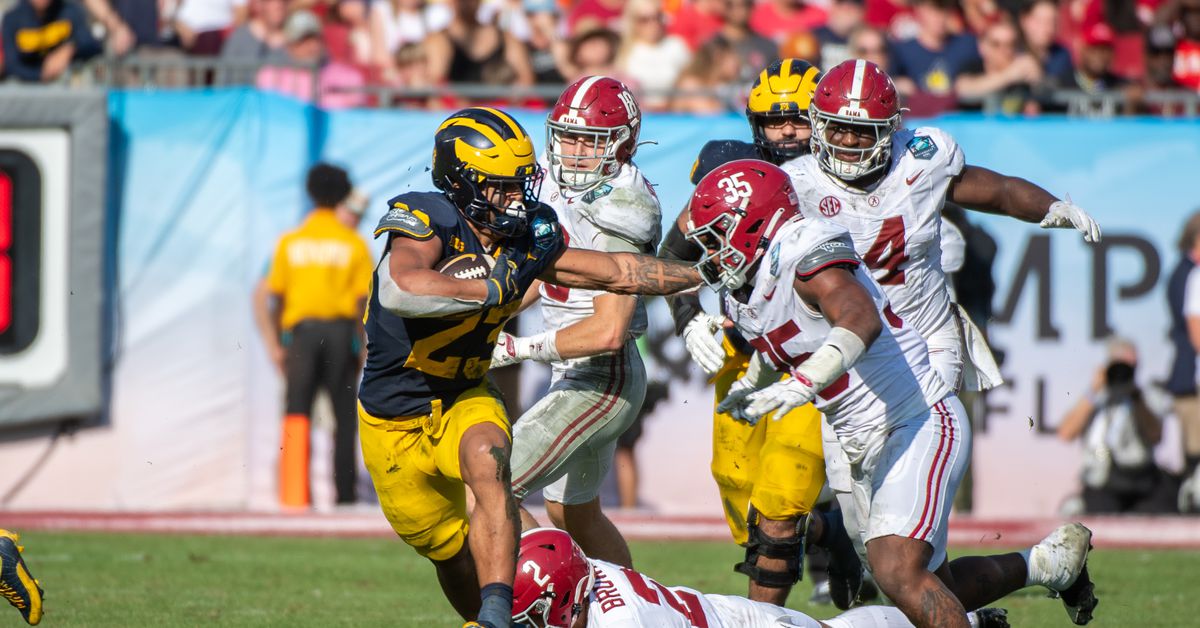

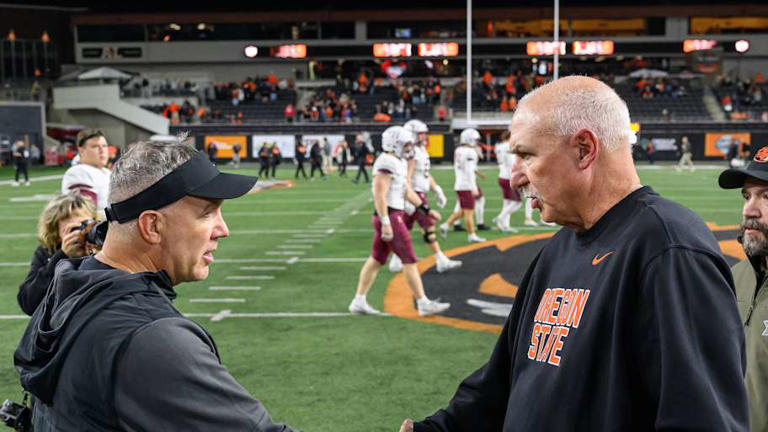
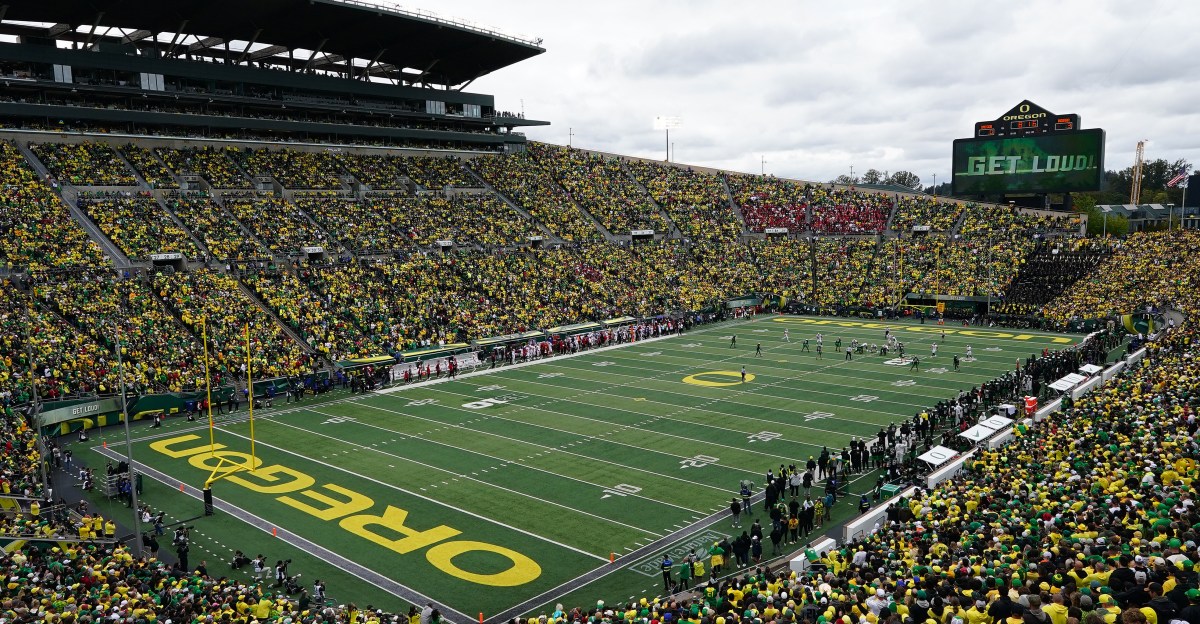
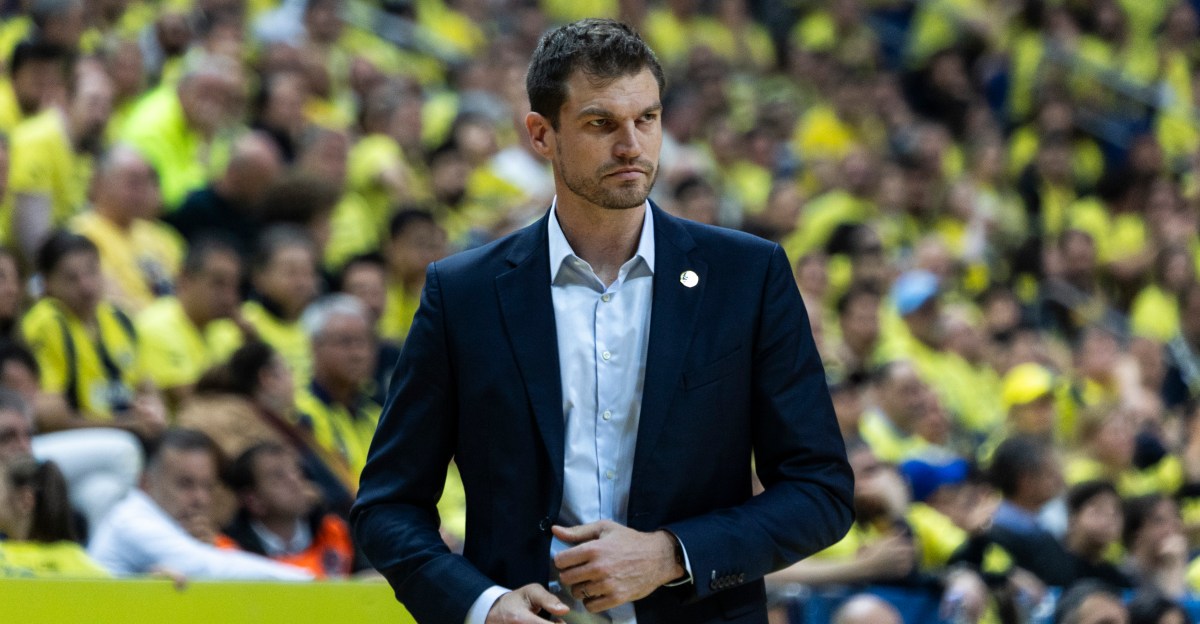








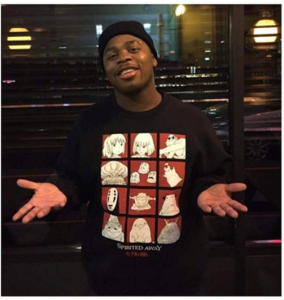

Post Comment